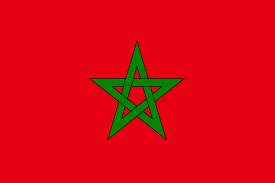Language/Moroccan-arabic/Grammar/Plurals
Hi Moroccan Arabic learners! 😊
In this lesson, we will talk about plurals in Moroccan Arabic. Plurals are a bit tricky in Moroccan Arabic, but don't worry, we will explain everything step by step. You will learn how to form different types of plurals and how to use them in context. We will also give you some interesting cultural facts along the way. So let's get started!
Consider broadening your understanding by checking out these related lessons: Alphabet and Pronunciation in ..., How to use “can” in Moroccan Arabic, Affirmative Imperative & The verb "To leave".
Introduction[edit | edit source]
In Moroccan Arabic, there are several ways to form plurals. The most common way is to add suffixes to the singular noun. There are also some irregular plurals that don't follow this rule. To understand plurals in Moroccan Arabic, it's important to know the different types of nouns. There are two main types of nouns in Moroccan Arabic: masculine and feminine. Masculine nouns usually end in a consonant, while feminine nouns usually end in "a".
Forming Regular Plurals[edit | edit source]
In Moroccan Arabic, adding suffixes is the most common way to form regular plurals. The suffixes used depend on the type of noun. Here are the suffixes for masculine and feminine nouns:
| Type of Noun | Plural Suffix | ||||||
|---|---|---|---|---|---|---|---|
| Masculine ending in consonant | -in | Masculine ending in -i | -at | Feminine ending in -a | -at | Feminine ending in -i | -iyat |
Let's see some examples:
| Moroccan Arabic | Pronunciation | English |
|---|---|---|
| سبعة (singular) | sab'a | seven (masculine) |
| سبعين (plural) | sab'in | seventy (masculine) |
| خطيرة (singular) | khtira | dangerous (feminine) |
| خطيرات (plural) | khtirat | dangerous (feminine) |
As you can see, for masculine nouns that end in a consonant, we add -in to form the plural. For masculine nouns that end in -i, we add -at. For feminine nouns that end in -a, we add -at. And for feminine nouns that end in -i, we add -iyat.
Forming Irregular Plurals[edit | edit source]
There are some irregular plurals in Moroccan Arabic that don't follow the suffix rules. Here are some examples:
| Singular | Plural | English |
|---|---|---|
| كتاب | كتب | books |
| ولد | أولاد | sons |
| بغاء | بغايا | prostitutes |
As you can see, in some cases, the vowel in the singular noun changes in the plural form. In other cases, the plural form is completely different from the singular form. Unfortunately, there is no easy way to memorize these irregular plurals, but with practice, you will get used to them.
Plurals and Gender[edit | edit source]
In Moroccan Arabic, the plural form of a noun can indicate the gender of the group. For example, the plural form of "students" can be masculine or feminine, depending on the gender of the students. Here are some examples:
| Singular | Plural (masculine) | Plural (feminine) | |||
|---|---|---|---|---|---|
| طالب | طلاب | طالبات | student (male) | students (male) | students (female) |
| معلم | معلمين | معلمات | teacher (male) | teachers (male) | teachers (female) |
| طبيب | أطباء | صيدليات | doctor (male) | doctors (male) | pharmacies |
As you can see, the suffix used for the plural form of the noun depends on the gender of the group. In some cases, the plural form is completely different from the singular form.
Plural Forms in Context[edit | edit source]
To understand how to use plural forms in context, let's look at a dialogue:
- Person 1: شحال من سيارة عندكم فالمشروع؟ (sh7al mn syara 3ndkom f lmshtwaa?) (How many cars do you have at the project?)
- Person 2: عندنا سيارتين فقط. (3ndna syaratayn fqls) (We have only two cars.)
In this dialogue, Person 1 uses the plural form of the noun سيارة (car) to ask about the number of cars. Person 2 answers with the plural form سيارتين (two cars).
Conclusion[edit | edit source]
In this lesson, you have learned how to form regular and irregular plurals in Moroccan Arabic. You have also learned how to use plural forms in context. To practice and improve your skills, you can use the Polyglot Club website. Find native speakers and ask them any questions!
Sources[edit | edit source]
Excellent job on conquering this lesson! Consider delving into these related pages: The verb "To Drink", Demonstrative Adjectives, Formation of the Conditional & The verb "To Walk".
Other Lessons[edit | edit source]
- Ordinal Numbers in Moroccan Arabic
- Possessive Pronouns
- How to use “there to be” in Moroccan Arabic
- Present Tense
- Adjectives
- Give your Opinion
- Pronouns
- The verb "To Walk"
- The Ablative Case in Moroccan Arabic
- The Dative Case in Moroccan Arabic

